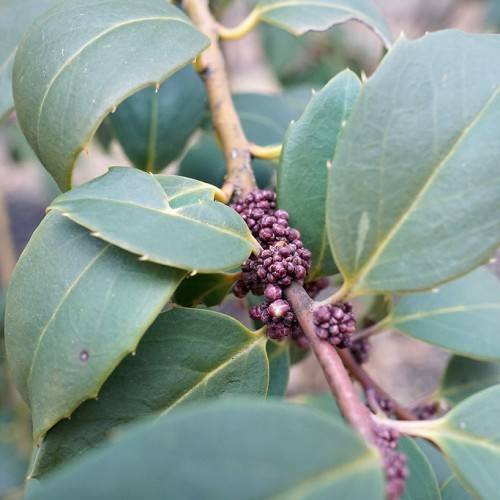
holly
Ilex ciliospinosa
Cycle:
Perennial
Watering:
Average
Hardiness Zone:
5 - 8
Flowers:
Flowers
Sun:
Full sun,part shade
Fruits:
Fruits Ready In Fall
Leaf:
Yes
Growth Rate:
Low
Maintenance:
Low
Drought Tolerant:
Yes
Salt Tolerant:
Yes
Thorny:
Yes
Tropical:
Yes
watering
Holly should be watered deeply and regularly for optimal growth. A good watering schedule for holly plants is to water deeply once every 1 to 2 weeks, depending on the weather. It is important to always check the soil before watering to determine if additional water is needed. In general, soil should be allowed to dry out before being thoroughly watered again. During the warmer months when the plant is actively growing, it should be watered more frequently. During the cold months, water should be reduced, as the plant enters a more dormant period.
sunlight
Holly thrives in partial shade or morning sun; it prefers protection from direct afternoon sun. During the growing season, Holly plants should be exposed to 4 to 6 hours of sunlight a day. It is also important to ensure that the plant receives adequate sunlight during the winter months, though the amount of sunlight needed will be significantly less. During winter, Holly should receive 2 to 4 hours of sun each day.
pruning
Holly (Ilex ciliospinosa) can be pruned anytime of the year, but the best time is late winter or early spring before new growth emerges. Pruning should be done sparingly and only to remove dead, diseased, or overgrown parts of the plant. The amount of pruning required will depend on the age and condition of the holly, but typically only light pruning is necessary. General shaping and thinning out of the branches can help maintain a uniform shape and benefit the overall health of the plant.
